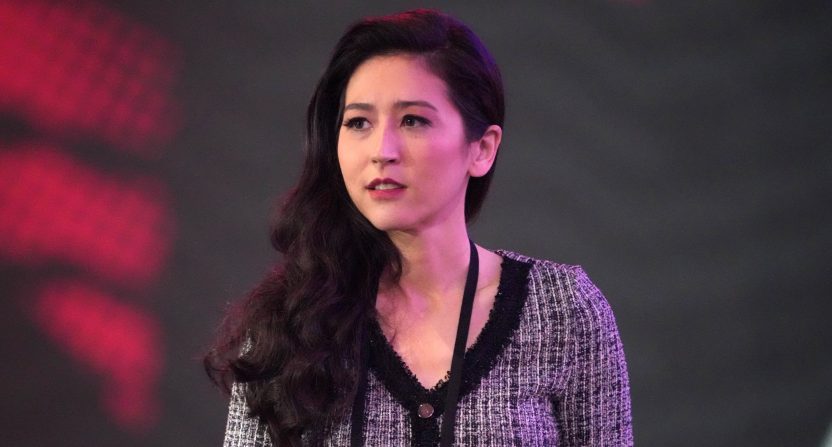Mina Kimes is more comfortable than most sports hosts delving into politics and social issues.
This week, as recent protests in Los Angeles against Immigrations and Customs Enforcement (ICE) raids continue, the NFL Live analyst took to social media to call out the “disparity” in media coverage of the protests compared with what she believes is a tamer reality on the ground in the city.
Kimes, who lives in Los Angeles, wrote on Bluesky that the protests are being “mischaracterized” (news coverage has highlighted Google Waymo vehicles on fire and violence against police) and that modern media may not be up to the task of delivering truth to users online.
“The disparity btwn what’s actually happening in Los Angeles and the way it’s being mischaracterized is one of the biggest stress tests of modern media in recent memory,” Kimes wrote. “Botted socials, AI, old clips, declining literacy—it’s like seeing a broken emergency response system hit by a storm.”
The effects of consuming news through technology come into focus in what we, as users, see. Algorithms inevitably prioritize some stories and videos over others, and these algorithms can be manipulated by the platforms that develop them or by the individuals who manage accounts to promote their beliefs.
As CNN’s Brian Stelter has reported extensively, traditional and digital media are feeding audiences an outsized narrative of lawlessness and violence. Dr. Phil McGraw’s Merit TV network has embedded with immigration officers in Chicago and L.A. for television specials documenting deportation raids. BBC Verify debunked a TikTok livestream hosted by a fake National Guardsmen who stated he was getting ready for a day of “gassing” protestors. U.S. Sen. Ted Cruz and California Gov. Gavin Newsom argued on X over a video of police vehicles ablaze, which Newsom’s press office clarified was actually from 2020.
These falsified viral social media posts prey on everyone’s fears and worst instincts. At the same time, many local outlets, along with live-streamers and content creators, have covered the protests in person for audiences to see what is happening in real-time. Many mainstream reporters are providing accurate, real-time updates. But in a sea of questionable content and intentional misinformation, it can be hard to find and follow truthful updates over days and weeks. As a result, users have a more difficult time distinguishing between them.
No matter an American’s views of the protests, Kimes is not wrong to call out how our rapidly changing, increasingly loud media environment makes it harder to follow the story and get the facts of the situation.
